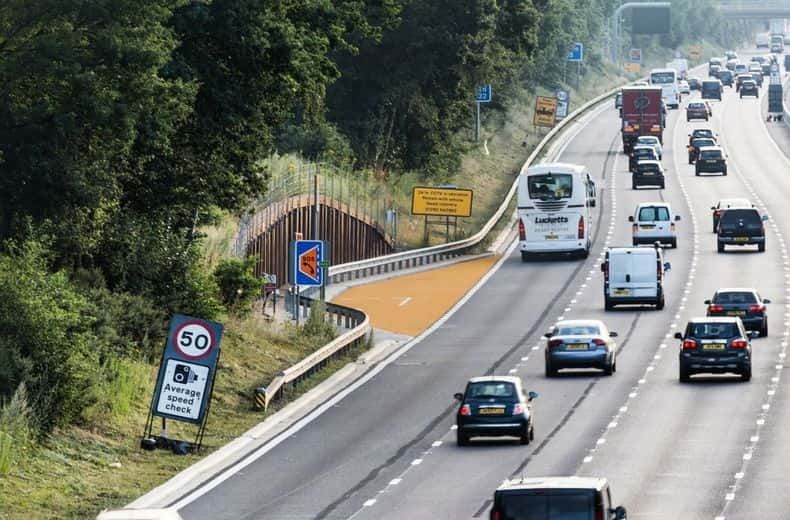The government-owned firm has said new emergency refuge areas will be added to the most dangerous stretches of motorway to decrease the likelihood of drivers having to stop in live lanes in the event of a breakdown.
Smart motorways allow hard shoulders to be used during high-volume traffic to boost capacity.
READ MORE: Emergency Refuge Areas instead of hard shoulders - how to use them & driving on motorway in wet weather
However, this means motorists run the risk of stopping in the live lanes if they are unable to make it to the nearest refuge area.
The move will see the maximum gap between lay-bys “where practicable” reduced from 1.5 miles to 1 mile.
The decision, which aims to provide “greater reassurance to road users”, was made after Highways England carried out a safety review of the new smart motorways.
Parts of the M25, M1, M4 and M6 have already been converted into smart motorways, and there are another 480 smart motorway lane miles being planned.
There has been growing concerns over smart motorway safety since their introduction, with many motoring groups expressing fears that drivers run the risk of being hit from behind if they stop suddenly in the new lanes.
READ MORE: Punishment for ignoring red ‘X’ signs ‘to start in March or Almost one in ten drivers ignore ‘Red X’ on UK motorways
In a letter to the Commons' Transport Select Committee, Highways England Chief Executive Jim O’Sullivan said: “Evidence demonstrates that ALR (all lane running or smart motorways) delivers comparable levels of safety to traditional motorways – including a significant improvement on the M25."
As part of measures to increase the safety of smart motorways, harsher penalties for drivers found using lanes with a red X sign on overhead gantries will come into effect this March.
Read more: Punishment for ignoring red ‘X’ signs & Revealed: The truth about ‘new’ smart motorway speed cameras




